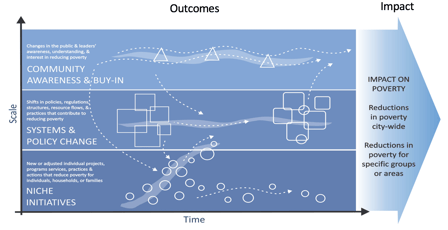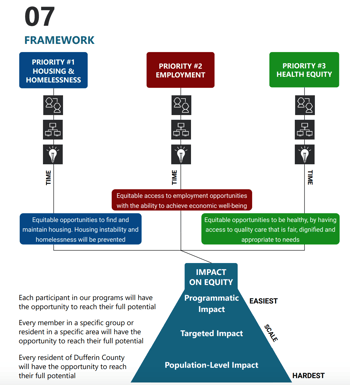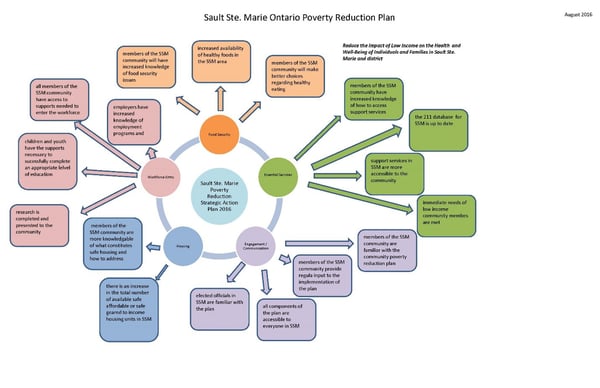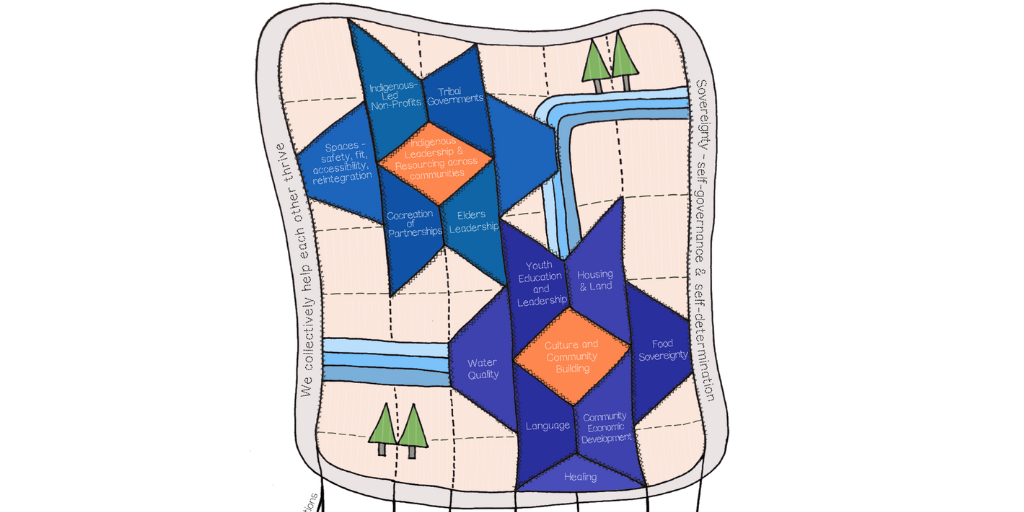Cities Reducing Poverty members are showing increasing interest in making the shift from evaluating and reporting on their activities – such as the number of volunteer hours worked or the amount of people who registered for a program – to measuring and talking about their impact.
Collective Impact initiatives, by nature, seek to “move the needle” on issues such as poverty, and with such complex efforts, it is important to have a shared measurement system to help keep efforts aligned, hold one another accountable, and to have data to indicate progress and for making strategic decisions.
From March – August 2019, 17 Cities Reducing Poverty (CRP) members participated in a pilot coaching program to gain knowledge, skills and resources to help them start or upgrade their tracking and reporting of their impact. Many finished the year by publishing a 2019 Community Impact Report, despite beginning with a number of common evaluation challenges, including:

- Lack of capacity for the coordinator – or backbone – and partners to dedicate to evaluation
- Uneven availability and quality of local data from partners who host programs, projects and services
- Lack of a common definition of what constitutes “poverty” and shared indicators of success
- Mis-match between goals and data availability to track progress against those goals
Led by evaluator, Mark Cabaj, President of Here 2 There Consulting, the program provided an evaluation framework - adaptable at the local level, and comparable against similar collaborative efforts across Canada – to guide collaboratives in clarifying and formalizing their theory of change and establishing short, medium and long-term outcome goals and indicators.
Several communities developed new impact frameworks to guide and communicate their work broadly and some were able to continue with and/or adapt existing frameworks. Examples include:

Dufferin County Equity Collaborative impact framework (new)

Sault Ste. Marie Poverty Round Table impact framework (existing)
Here are four good ideas learned from the program, for building your own impact evaluation framework and plan:
- Shifting awareness and will – Build a strategy and track how you are creating an environment that is receptive to poverty reduction efforts, through awareness-raising, education and advocacy efforts.
- Policy and systems change – Start tracking and tracing the collaborative’s and partners’ activities to see how you have incrementally contributed to local and regional policy and systems changes.
- Niche initiatives – Clarify the logic and describe how outputs and outcomes of projects, programs and services are contributing to your medium and long-term goals.
- Population-level change – Discuss and establish one or more imperfect population-level indicators of poverty, in order to keep your eye on whether the local “needle” is moving on poverty.
Take Your Learning Further
- Read the article: Impact Reporting – From Activities to Outcomes
- Explore Cities Reducing Poverty sample impact reports, ranging from new to mature initiatives:
- Getting to Impact: An overview of collective impact work in Revelstoke
- Dufferin County Equity Collaborative 2019 Report to the Community 2018-2019
- Living SJ Report to Our Community 2018/2019
- Edmontonians’ Awareness and Attitudes on Poverty Follow-up Survey 2019
- Williams Lake Thrive Poverty Reduction Project 2019 Impact Report
- Winnipeg Poverty Reduction Council April 2019 Update to the Community





